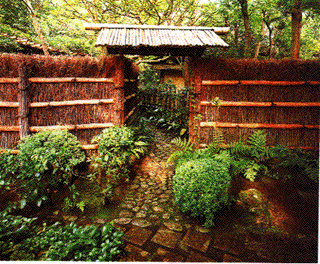
|

|
| There are three types of fences: the short fence which extends from the house into the garden, an inner fence and an outer fence. The outer fence is the first type you see as you approach the garden. In the example above, the fence is thick and the branches are tightly assembled, serving as an protective outer wall. However, this not the case with every outer fence. Its appearance depends on the type of garden that it surrounds. For example, a landscape garden fence may not be so obvious in order to preserve the illusion of its vast area. |
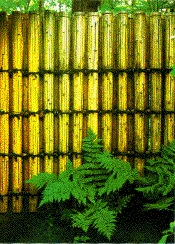 |
Bamboo fences are very popular and range in design. These fences are think in order to be an outer wall. As you can see, the color of the fences are different. In this, way the fence itself acts as an essential factor in garden design. Not only as a colorful backdrop to the plants and flowers that you see with it, the fence also adds texture and patterns. |
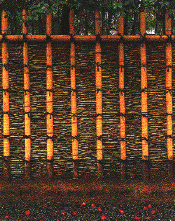 |
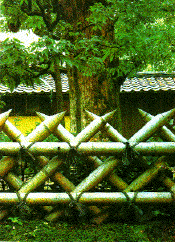 |
Here are two images of outer fences that are not opaque. The way in which they are assembled does not block the garden off from its surroundings. As you can see, the branches are assembled diagonally and then held in place with long horizontal branches. |
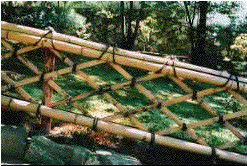 |
| The fences within the garden are not as thick. Such fences emphasize lightness and act as partitions. The materials often used are bamboo, wood and twigs of bamboo or tree. The short fences, or the sodegaki, are screens that allow the gardener to hide unwanted views or objects. They are about 6 or 7 feet high. The sodegaki are made of wood or bamboo and thus, like the other fences, add color and texture to the garden. |
|
|
|
|
|
|
|
|
|
|
|
|
|
|
|
|
|
|
|
|
|
|
|
|
|
|